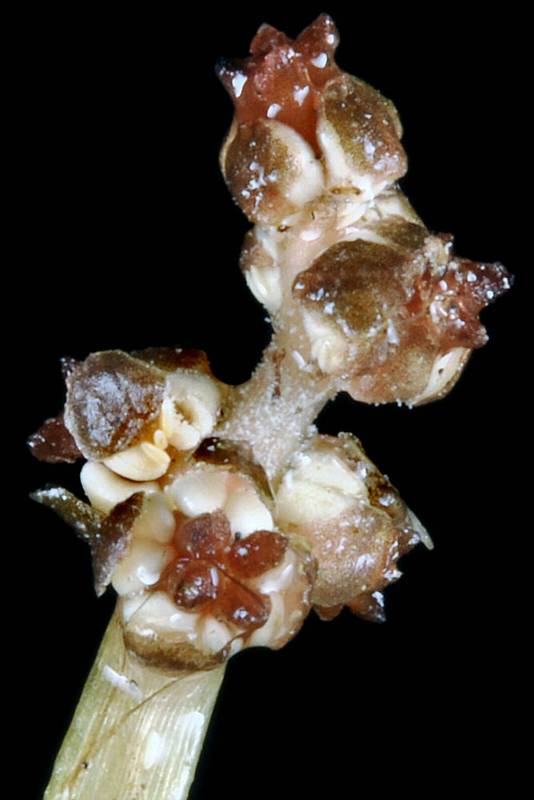Potamogeton alpinus
Potamogeton crispus
northern pondweed, reddish pondweed
curly pondweed
Various shades of red; submersed sessile, 2-8 x 1-2 cm, lanceolate to elliptic-oblong, tapered to both ends, entire, tip blunt, veins 7-9; floating 0 or short-petioled, lanceolate, base tapered, veins 7-15;
stipules beyond 3 cm, free, membranous, early-deciduous.
: Leaves alternate, all submersed, narrowly oblong, 3-8 cm. long and 3-10 mm. broad, strongly crisped, finely serrulate on the upper margins, rounded at the tip, sessile and clasping, 3- to 5-nerved;
stipules delicate, 4-8 mm. long.
Inflorescence generally < 3 cm, floating to emergent;
peduncle stiff.
Flowers perfect, in spikes 1-2 cm. long on peduncles 3-5 cm. long;
perianth of 4 clawed segments, each with an upturned, oval blade;
stamens 4, fused with the claws;
pistils 4, sessile.
Around 2.5 mm, keels 1 or 3, generally, beaked, sides concave to convex.
Achenes ovoid, 3 mm. long, with 3 obtuse but prominent keels, tapered into a beak 2-3 mm. long.
One hybrid, Potamogeton crispus × P. praelongus (= P. ×undulatus Wolfgang ex Schultes & Schultes f.), has been described.
Potamogeton alpinus
Potamogeton crispus
- Local floras:
BC,
CA,
OR,
WA
- Local Web sites:
CalFlora,
CalPhotos,
Flora NW,
PNW Herbaria
WildflowerSearch
iNaturalist (observations)
USDA Plants Database
- LBJ Wildflower Center
- SEINet
- Plants of the World Online
- Encyclopedia of Life
- Wikipedia
- Google Image Search
- Local floras:
BC,
CA,
OR,
WA
- Local Web sites:
CalFlora,
CalPhotos,
Flora NW,
PNW Herbaria
WildflowerSearch
iNaturalist (observations)
USDA Plants Database
- LBJ Wildflower Center
- SEINet
- Plants of the World Online
- Encyclopedia of Life
- Wikipedia
- Google Image Search


